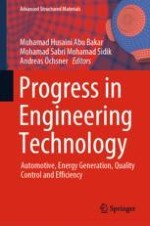This book presents recent developments in the areas of engineering and technology, focusing on experimental, numerical, and theoretical approaches. In the first part, the emphasis is on the emerging area of electromobility and its sub-disciplines, e.g. battery development, improved efficiency due to new designs and materials, and intelligent control approaches. In turn, the book’s second part addresses the broader topic of energy conversion and generation based on classical (petrol engines) and more modern approaches (e.g. turbines). The third and last part addresses quality control and boosting engineering efficiency in a broader sense. Topics covered include e.g. modern contactless screening methods and related image processing.
